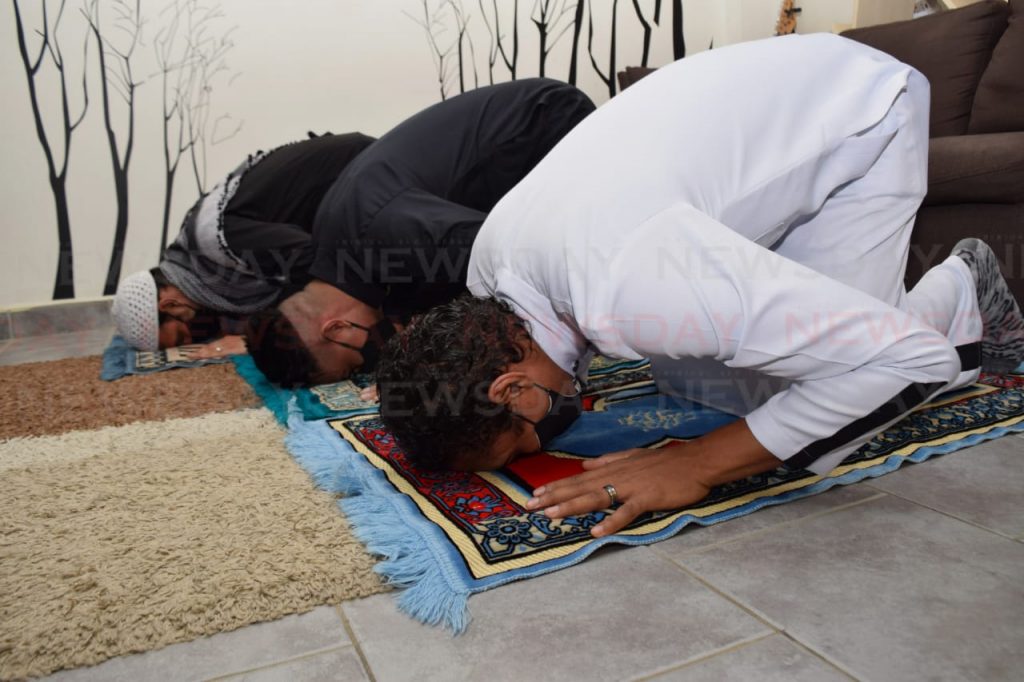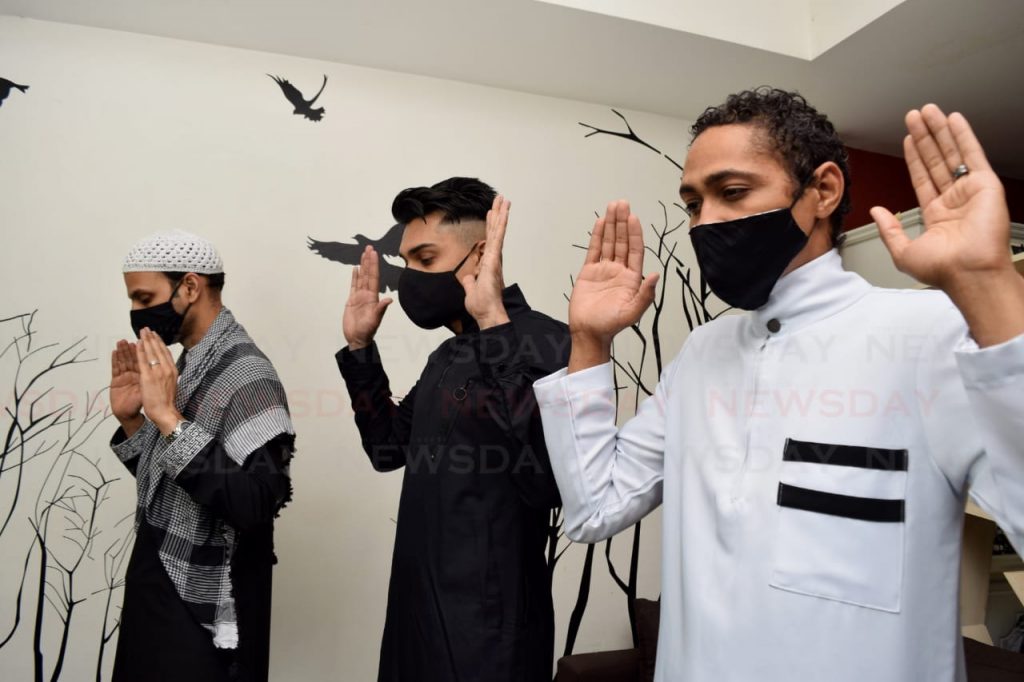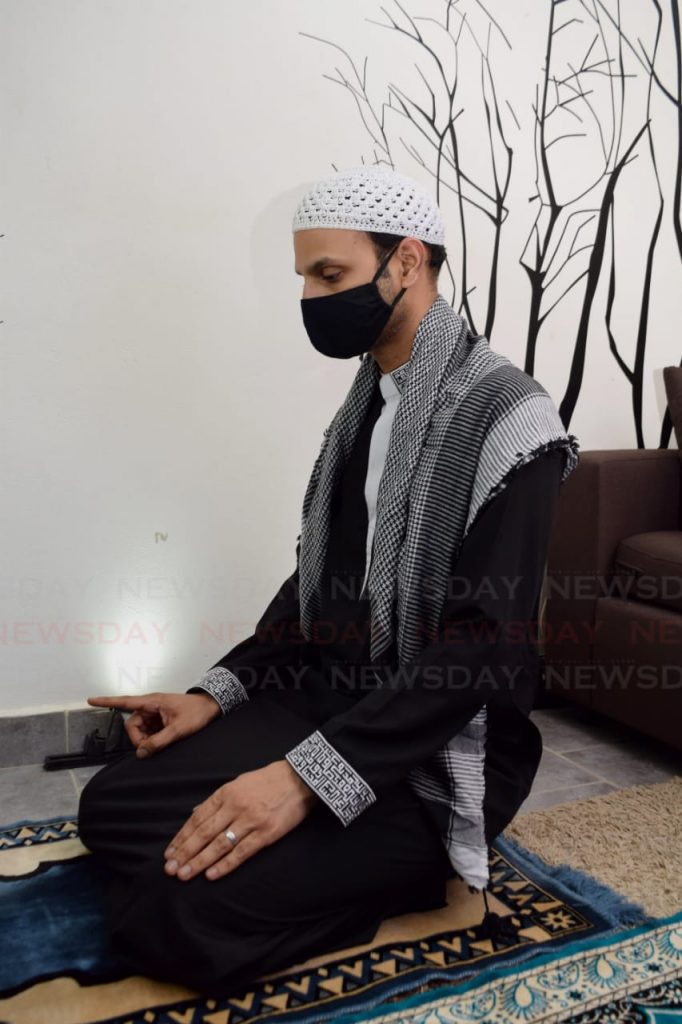A call to prayer

VIDYA THURAB
EID-UL-FITR celebrations in TT are different this year, as it is around the world.
For Muslims, is a time to show gratitude to God, give to the poor (known as Zakat al-Fitr), send greetings and feast with families.
As Muslims here adapted to changes for Ramadan observations, the Rahaman family allowed Newsday to observe how it practised its prayer session, while adhering to measures to ensure family members stay safe and protected from the covid19 virus, and at the same time, embodying devotion to God, charity and family love.
We captured the family in these prayer positions:

Takbir – is the beginning stance of the Muslim prayer positions. The devotee faces towards Mecca with both hands raised to the ears or shoulders with palms facing outwards. The significance is to begin prayer by recognising, acknowledging and glorifying God's greatness.
Qiyaam – The right hand is placed over the left at chest or navel level while standing (this may vary according to the subdivision of Muslim faith followed). A prayer praising God and humbly seeking His protection is read. This is an integral part of the Islamic prayer.

Sujud – The Muslim faithful bows in the prostrate position to God, reciting three times, Glory be to God, the Most High. Then kneel and bow touching the ground with the forehead, nose, palms, knees and toes.

Tashahhud – This is also known as the testimony of faith position. After saying God is Great, the sitting position is resumed, and a set number of prayers are said in Arabic, glorifying God and sending peace onto the Prophet Muhammad. The declaration of faith is repeated with the forefinger of the right hand raised, in order to act as a witness. Devotees pray for God to bring blessings and peace upon Prophet Abraham and his family and Prophet Muhammad. Muslims also ask for forgiveness, mercy, and God's blessings for them and their children until the day of judgment.

Comments
"A call to prayer"